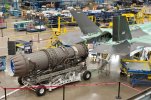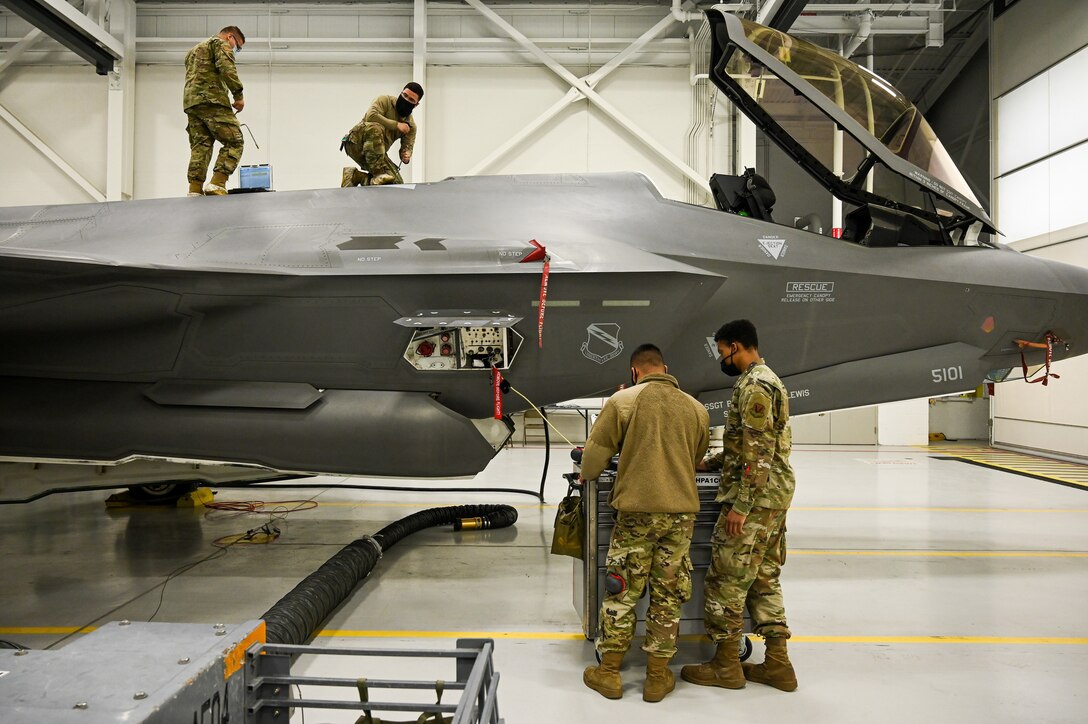Ei kuulosta tuo 120 pv target power module fixille kelvolliselta meille esitetyllä varamoottorien määrällä.

 breakingdefense.com
breakingdefense.com
Hiukan turhan lepsu tavoite asetettu?
F-35 Engine Maker Braces For Sustainment Cost Spike [long article BEST READ at SOURCE I reckon]
07 Oct 2021 Valerie Insinna
"Scheduled maintenance for the F-35's engine in the mid-2020s will drive up the price of engine sustainment, just as the Pentagon expects cost reduction goals come to fruition.
MIDDLETOWN, CT: Pratt & Whitney, the company that manufactures the engine for the F-35 stealth fighter, has a big, costly problem — and no easy solution in sight. In the mid-2020s — just as the Pentagon expects to see a sharp decrease to F-35 sustainment costs — the first F135 engines used by the jet will hit 2,000 hours and will be sent to the depot for a scheduled overhaul.
While the company is taking steps to minimize the cost of that maintenance work as much as possible, it’s unavoidable that engine sustainment costs will bump up during the mid-2020s, said Amanda Glode, Pratt & Whitney’s director of sustainment for the F135....
...Explaining that reality to F-35 program stakeholders — which include the US Air Force, Navy and Marine Corps, a host of international customers, and skeptical lawmakers on Capitol Hill — has been a challenge for the company, said Glode....
...First, the F135 Heavy Maintenance Center at Tinker Air Force Base, Okla., has not been able to repair power modules as quickly as projected, creating a backlog of work. Secondly, some aircraft that frequently operated in hot, sandy environments were grounded after the coating on engine rotor blades cracked and degraded.
Pratt & Whitney has developed a new coating that has been incorporated on about 25 percent of the F-35 fleet — mostly jets that have recently rolled off the production line. But it could take as long as 2030 for all fielded jets to be retrofitted, said Katherine Knapp Carney, the company’s chief engineer for the F135 program....
...As of Friday [01 Oct 2021?], the number of Air Force F-35As grounded due to propulsion issues stood at 42 jets, according to an Air Force source with knowledge of the program. Glode acknowledged that the current F135 sustainment strategy clearly isn’t meeting customer needs, and that Pratt & Whitney needs to make improvements in the area of affordability. However, the company is meeting program requirements when it comes to the number of F-35s down for engine issues, she said.
Under its current contract, Pratt & Whitney is obligated to ensure that no more than 10% of F-35s are down due to engine issues, with 6% being the objective number. Historically, the company has “beat” the objective number, with only 4% of the fleet typically non-mission capable because of engine problems.
With about 9% of jets currently down due to engines, Pratt & Whitney is still technically within threshold levels of its agreement with the Pentagon, even if it’s not meeting the objective, Glode said. “That’s a lot of the challenge that we get into today, is people not appreciating the fact that this was the way the program was designed,” she said....
...Even if money flows to expedite work at the F135 depot at Tinker, to stand up additional maintenance hubs elsewhere, to buy additional engines and to change the F135 sustainment architecture, it will take time for those changes to take effect and for the engine backlog to subside, Glode said.
“The depot network is about five years behind in terms of where it should have been based on the program design and architecture, in large part because funds were diverted earlier in the program because there were other needs,” she said. “Sustainment just didn’t get the budget that it required in a timely manner.”
Future Hopes
There are some signs of improvement at the depot, said Jen Latka, Pratt & Whitney’s vice president for the F135 program.
Tinker’s depot only produced 14 power modules last year, but is on track to “significantly” exceed its target of 40 modules in 2021, she said. And while it took more than 200 days on average to repair a power module in 2020, workers on the depot have begun to hit the “aggressive and realistic” 120 day target that will remain the goal for the future....
...For the F135 — which has rotors made of titanium and artisan-made components measured to the thousandth of an inch — the biggest drivers of cost during maintenance events are parts and materials, Latka said. Therefore, Pratt & Whitney’s focus has been on conducting engineering work and developing repairs that enable maintainers to replace fewer parts during overhauls....
...Another long-term effort is making continual improvements to parts and managing the fleet so that engines can stay on wing for longer periods of time without having to be sent to the depot for scheduled or unscheduled repair work, said Glode.
However, she noted that there will be added costs in the mid-2020s even if the company finds ways to reduce maintenance expenses.
“We’re trying to bend the curve and make the slope less. It’s never going to go away,” she said. “It’s never going to be flat. It’s just the nature of propulsion, it comes in sine waves as scheduled maintenance comes and goes.”"

F-35 Engine Maker Braces For Sustainment Cost Spike - Breaking Defense
Scheduled maintenance for the F-35's engine in the mid-2020s will drive up the price of engine sustainment, just as the Pentagon expects cost reduction goals come to fruition.
Hiukan turhan lepsu tavoite asetettu?
"Under its current contract, Pratt & Whitney is obligated to ensure that no more than 10% of F-35s are down due to engine issues, with 6% being the objective number. Historically, the company has “beat” the objective number, with only 4% of the fleet typically non-mission capable because of engine problems.
With about 9% of jets currently down due to engines, Pratt & Whitney is still technically within threshold levels of its agreement with the Pentagon, even if it’s not meeting the objective, Glode said."






